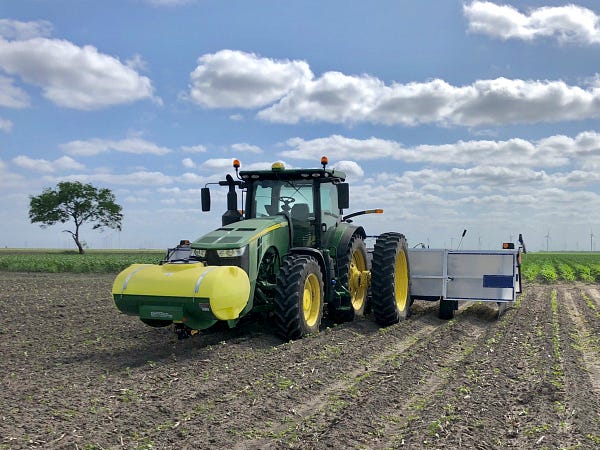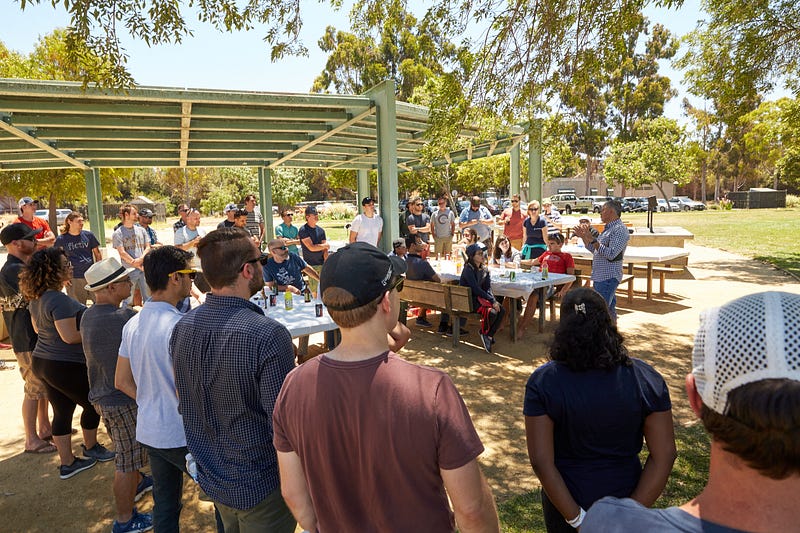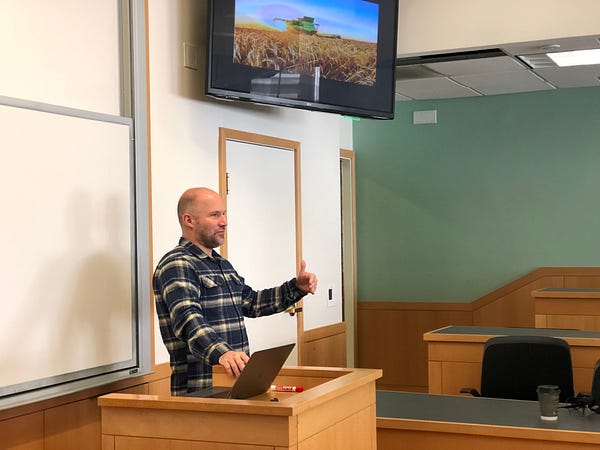Ag Tech Sunday - Blue River Technology: Transforming the future of Farming
- By: "Farm Tender" News
- Ag Company News
- Apr 28, 2019
- 612 views
- Share

This article is bought to you by Australian Fodder Industry Association.
What happens when you apply machine learning and robotics to agriculture? Blue River Technology, based in Sunnyvale, California, is the exciting new subsidiary of John Deere, an American corporation that primarily manufactures agricultural and construction machinery. Since the acquisition in 2017, Blue River has more than just grown exponentially — they’ve gained access to world-class experience in equipment manufacturing. While preserving their startup mentality, Blue River has embarked on a mission to build technology that will help feed the world, and do it more sustainably.
Ad -The Australian Fodder Industry Association or AFIA oversee the growing Fodder Industry. Click here to become a member today - Ad
Ad -The Australian Fodder Industry Association or AFIA oversee the growing Fodder Industry. Click here to become a member today - Ad
So what does Blue River bring to John Deere’s table? Their projects revolve around computer vision, machine learning, and robotics — which the company refers to as the eyes, brains and hands of a machine.
“By putting all three things together, you can do powerful and revolutionary things,” Nicole Pineda, Blue River’s University Relations and Talent Brand Specialist, comments. “Very few projects in the real world put these three cutting-edge technologies together. Almost all projects at Blue River do. And not only that — we then get to deploy these solutions in the real world and have a global impact.”
What Blue River is building
Blue River focuses on applying machine learning, robotics, and computer vision technology to agricultural equipment that will in turn help farmers in making better decisions. Their primary product, See & Spray, uses computer vision, machine learning, and advanced robotic technology to distinguish between crops and weeds — and then spraying only the weeds.

Blue River’s See & Spray machine (pictured) is equipped with 2-inch resolution on the field to perform its highly precise application.

Blue River’s See & Spray machine (pictured) is equipped with 2-inch resolution on the field to perform its highly precise application.
“The machine processes images of plants more than 20 times per second while traveling 12 mph through the field, comparing them to an expanding training library of over 1,000,000 images,” explains Jorge Heraud, CEO. The front cameras use computer vision and machine learning to make on-the-spot judgment calls, while the rear cameras calibrate the systems for adjustments on the fly. With this technology, Blue River expects to reduce herbicide use by up to 80 percent, improving sustainability and driving customer profitability. See & Spray is currently in the field testing stage.
Ad -The Australian Fodder Industry Association or AFIA oversee the growing Fodder Industry. Click here to become a member today - Ad
Ad -The Australian Fodder Industry Association or AFIA oversee the growing Fodder Industry. Click here to become a member today - Ad
“Longer term, we’re looking at ways to expand this ultra-precise approach to other material applications used in agriculture like insecticides, fungicides and fertilizers, providing even more opportunities for engineers who want to work on technology that has a global impact.”
The work in progress
“Farmers have a huge job to do,” Nicole reminds us. “Not only are they producing nearly everything we eat, but the success of their farm directly impacts their bottom line.”
Farmers manage large networks of fields and millions of plants — in order to better maximize their yields they need to reevaluate their herbicide distribution on a plant-by-plant basis. Farmers will typically employ the “one size fits all” approach, spraying their entire fields with a single uniform solution. This can result in applying unneeded herbicide, however, which is costly and subjects crops to herbicides that are meant to control the weeds.
Blue River offers an alternative approach: customizing where herbicides are deployed at the plant level so that they can be sprayed only where they are needed, reducing resistance and creating longer-term viability.
According to Blue River, farmers’ annual herbicide bills, which are a massive recurring cost, could be reduced by up to 80% — savings that could range from hundreds to thousands of dollars per year.

Blue River’s See & Spray machine (rear) powered by John Deere’s 8245R tractor (front).
The near future

Blue River’s See & Spray machine (rear) powered by John Deere’s 8245R tractor (front).
The near future
We can expect to see this technology out in the field sooner than you may think. Over the next months, Blue River will be improving and testing their designs, gathering customer feedback, at larger scales as they continue their path towards commercialization.
Ad -The Australian Fodder Industry Association or AFIA oversee the growing Fodder Industry. Click here to become a member today - Ad
Ad -The Australian Fodder Industry Association or AFIA oversee the growing Fodder Industry. Click here to become a member today - Ad
“We are also working on new computer vision sensors and algorithms, as well as cutting-edge machine learning techniques,” Jorge adds. “With that, we’re working on the integration of complicated mechanical, electrical, and software technology on machines that are outside in the dirt and in rugged conditions — while also moving at speeds in excess of ten miles per hour.”
For a lot of companies, applying computer vision, machine learning, and advanced robotics in commercially available products is a goal for many years down the line. At Blue River, this technology isn’t just theory. Their employees work on products and innovations that will make a big impact in the real world, and that they can see in the field today.
“Producing food is critically important and very complicated because of the immense variability and unpredictability a farmer encounters day to day,” Jorge explains. “On top of that, the global population continues to grow while the amount of arable land decreases. This means farmers need to farm smarter and more precisely. The products we are working on can help immensely in increasing efficacy, crop yields and environmental sustainability while also controlling costs.”
“Working at Blue River means you’re working for a team that is actively solving some of the biggest global problems through advanced technology applications. Additionally, because we are a part of John Deere, it means we can then deploy these solutions at a global scale.”

Jorge Heraud, CEO, addresses staff at an annual company BBQ.
Who they’re hiring
Blue River provides opportunities for engineers who want to join a team that doesn’t just develop cutting-edge technology — they are helping transform one of the few industries that impacts every single person in the world.
“As we continue to grow, we are actively looking to hire software, hardware and machine learning engineers that are interested in working on projects that will have a tangible impact on people around the world,” Nicole says. The Blue River culture is highly collaborative and the ideal candidate will value cross-functional teamwork and risk taking.
Ad -The Australian Fodder Industry Association or AFIA oversee the growing Fodder Industry. Click here to become a member today - Ad
Ad -The Australian Fodder Industry Association or AFIA oversee the growing Fodder Industry. Click here to become a member today - Ad
“Blue River is an ideal work place for engineers looking for a startup environment that also has the means and scale of a well-established company.”


Willy Pell, Director of Engineering at Blue River Technology, visited MEng students at our most recent Career Chat event in February 2019.
In short, Blue River seeks talented individuals with both a technical background and a passion for creating real social impact. The Berkeley Master of Engineering — whose curriculum features both engineering and leadership components — is a program designed to educate graduates who can readily enter the workforce with both technical and communication tools.
“Some of the biggest hiring struggles is finding the talent that understands both,” Nicole continues. “Having solid partnering with programs such as [the Berkeley MEng] proves successful in not only expanding our candidate pipeline, but also in keeping pulse with the market so we as a company can continue to adapt and grow.”
Ad -The Australian Fodder Industry Association or AFIA oversee the growing Fodder Industry. Click here to become a member today - Ad
Ad -The Australian Fodder Industry Association or AFIA oversee the growing Fodder Industry. Click here to become a member today - Ad
“Our company culture encourages growth and leadership. To see this packaged in the educational space is something we are excited for.”
http://www.bluerivertechnology.com/
http://www.bluerivertechnology.com/











Share Ag News Via